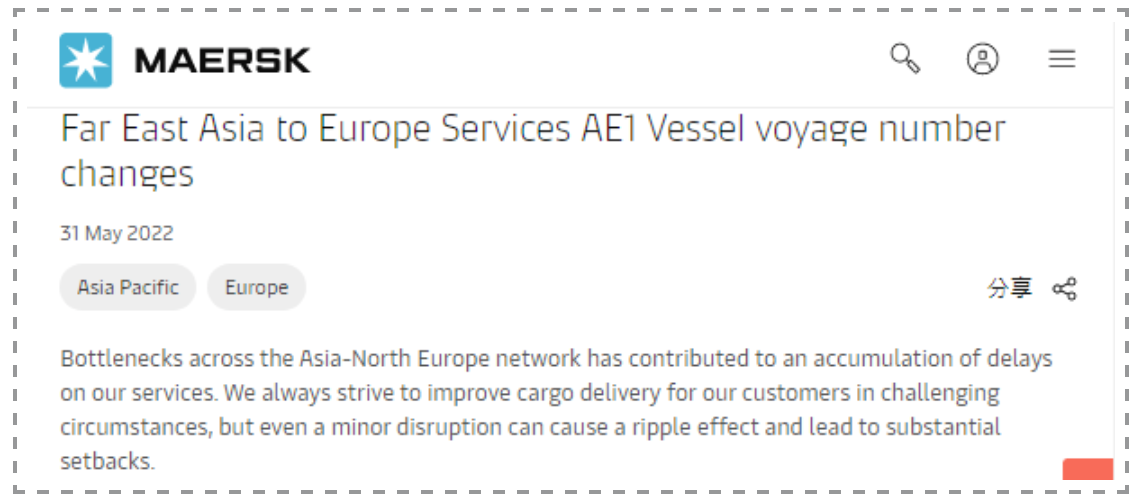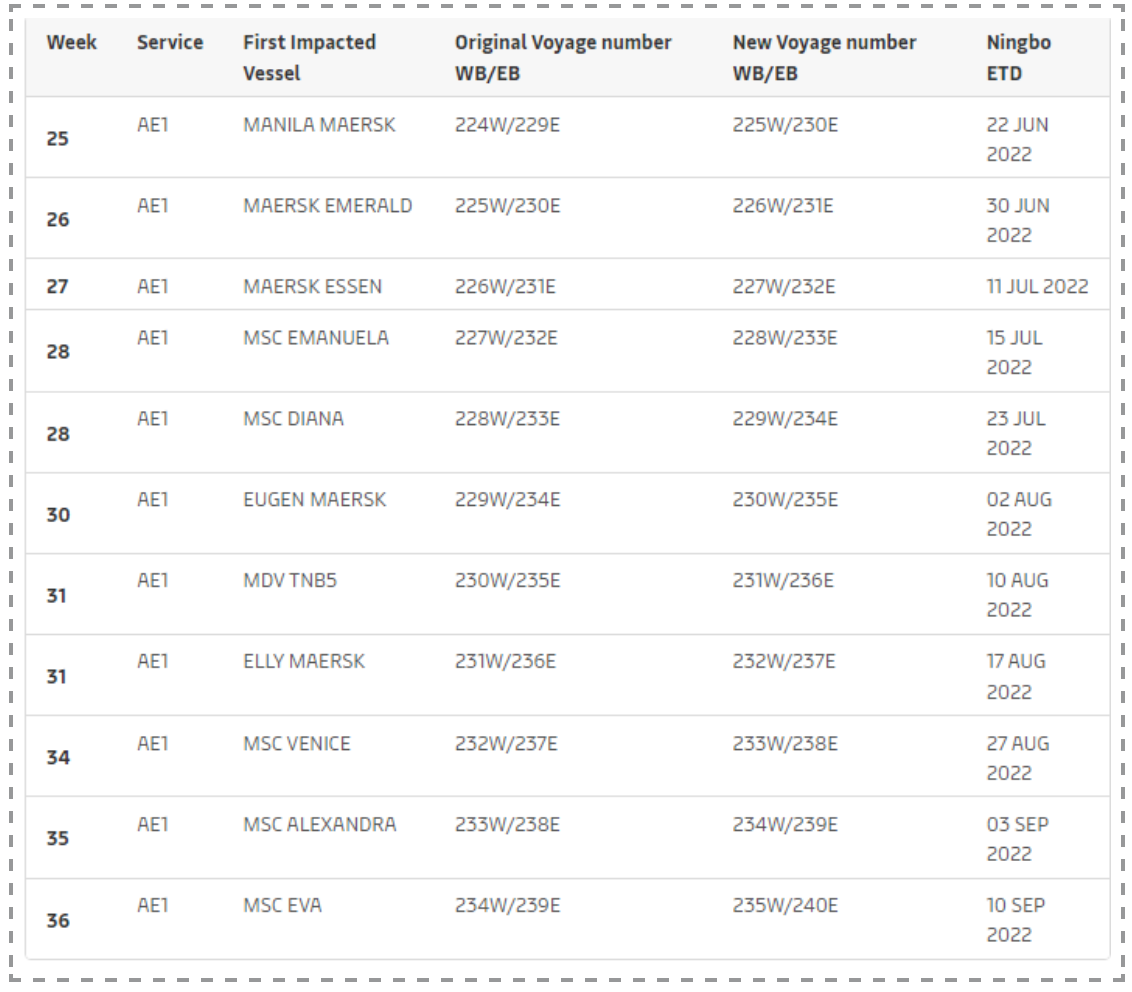
With the reopening of Shanghai and the approaching of the peak season, European ports will usher in a wave of imported containers, but what is worrying is that the peak season has not yet come, and the major container hub ports in northern Europe are facing serious congestion.
During the last two months of Shanghai's lockdown, empty containers and containers awaiting export piled up at major ports in northern Europe as shipping lines canceled one-third of booked voyages. In addition, thousands of containers that were blocked by customs and shipped to Russia are also stored here for a long time, further increasing the pressure on the port.
The port of Hamburg is heavily congested
Speaking about congestion at the Port of Hamburg, an industry insider said: “Germany is still working on a seven-day schedule, but ships arrive every nine to 12 days. The box is full."
The same goes for warehouses and storage areas in and around Hamburg.
In a new market report published this week, Maersk said its service network was "under severe pressure", which it blamed on "disruptions in European port operations". "Our ships experienced significant delays in northern Europe, which affected the return schedule to Asia Pacific," the shipping company said.
Maersk said the ports of Rotterdam and Bremer were currently "most congested", resulting in "significantly longer" waiting times for berths and slow vessel productivity. Maersk has made adjustments to AE1 voyages due to delays due to bottlenecks in the Asia-Nordic service network.


Meanwhile, Hapag-Lloyd's client advisory said the yard utilisation at Hamburg's Altenwerder Container Terminal (CTA) was at 90% "mainly due to the unloading of imported large vessels and the lower rate of terminal pickups".
Hapag-Lloyd warns: "Due to high yard utilisation, reefer slots are used as dry box storage, limiting the maximum number of reefer plugs available."
In addition, Hapag-Lloyd said that at the PSA terminal in Antwerp, the yard utilization rate of 869 berths rose to 90%, and the utilization rate of reefer containers at 913 berths continued to remain at 100%, and the reefer containers have been stacked in three layers.
Rotterdam yard density level increased to 96%
In neighboring Rotterdam, Hapag-Lloyd faces a similar congestion problem as Maersk.
It said the yard density at the Rotterdam Gateway (RWG) had "worsened" to 95% due to "increased container dwell times and the continuous accumulation of Russian cargo embargoes from different carriers", while at ECT the yard density level had increased to 96%, mainly due to "excessive delays in transshipment and imported goods".
Severe congestion at the ports of Belgium, the Netherlands and Luxembourg is bad news for barge operators, with Antwerp halting all barge operations until June 30.
In addition, feeder operators are also suffering huge berthing delays at Nordic hub ports. A feeder operator source said vessels on this route typically wait four to five days after arriving at the Rotterdam and Antwerp terminals, making scheduling impossible.
“In the past, a single vessel could complete the Rotterdam-Dublin-Rotterdam loop service in six days; now it is planned to take nine days. This means that more vessels will need to be deployed to maintain regular service.”
Chittagong Port is "full of boxes", the yard is full of goods
In addition, due to delayed delivery, Chittagong port is full of goods and can no longer continue to receive LCL goods.
According to the contents of a recent letter from the port authority, about 1,573 TEUs of LCL containers have been waiting to be unloaded for several days, while another 1,000 TEUs are waiting to be unloaded on ships at outer anchorages.
"In order to keep operational activities at Chittagong port unimpeded, normal and vibrant, fast delivery of LCL container cargo is required," the company said.
The slowdown in the movement of goods at container freight stations has severely impacted the daily activities of Bangladesh's major seaports. 92% of Bangladesh's maritime trade is handled by this seaport.
The port has designated a LCL container storage capacity of 1,000 TEUs at its yard, but the container freight station (CFS) often exceeds capacity as importers prefer to use the port yard as a "warehouse" rather than receiving cargo.
A Chittagong port official said, "Importers are just rushing to take 10% of newly landed LCL containers, while the remaining 90% remain at the Container Freight Station (CFS) for months."
A few months ago, the port authority threatened to impose a quadruple fine on overstayed boxes and cargo, but that did not change the situation much.
Since the Hari Raya holiday, the number of containers in the port yard has remained at 40,000 TEU, while the total storage capacity is 49,018 TEU. According to port data, about 42,153 TEUs were in the port yard yesterday.
Meanwhile, 19 container ships were waiting at anchorage outside the port, and another 12 container ships were loading and unloading containers.